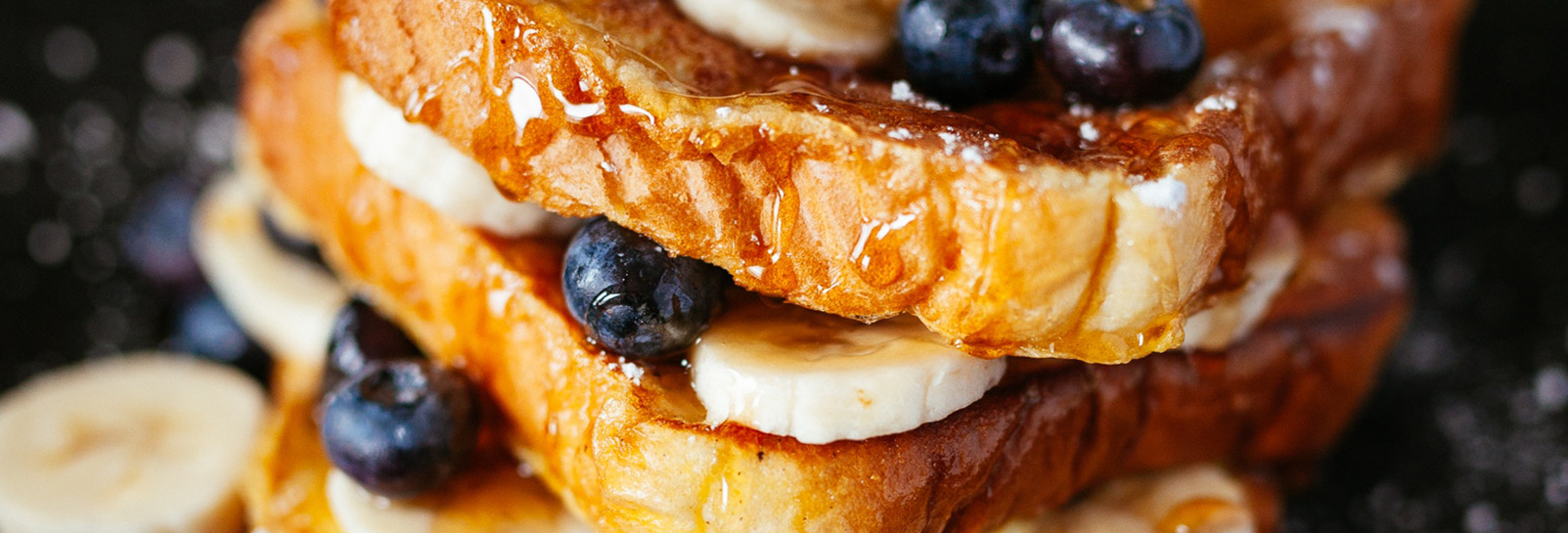Food’s fun. It would be easy to look at drool-worthy food photos and adventurous recipes and assume that content marketing about food is all fun, too.
But covering food for pros who work in the industry requires a complex balance of audience persona work, expertise and style. Yes, it’s fun. But it goes far deeper than Instagram-baity extreme dessert photos and consumer-ready recipes.
1. Focus on your audience’s needs
This doesn’t mean simply knowing your customers are restaurants. If you’re a B2B business, get to know who exactly uses your products or solutions—and how—as well as who uses your content. Is it restaurateurs and general managers at independent restaurants? Executive chefs for universities’ dining operations? C-suiters at fast food chains?
Beyond titles and business type, knowing how large your readers’ businesses are will give you more insight into what their responsibilities, challenges and aspirations are. All of this info informs your underlying content strategy and ongoing content ideas.
For example, an independent confectionery owner may have a passion for all things chocolate and want expert insight into the future of fine chocolate craftsmanship, but he may also need 101-level advice on small-business marketing. Meanwhile, a marketing director at a national ice cream chain doesn’t need to be convinced of the value of Instagram stories for food businesses, but she does want an in-depth dive into consumers’ demand for sustainably sourced products.
Even if you’re targeting just one segment of the giant foodservice world, you’re likely speaking to several personas. A strong content marketing strategy ensures you’re reaching each with relevant, interesting information that meets their individual needs.
2. DON’T get tunnel vision
Although you may only sell to one area of foodservice, it’s important to keep track of what’s happening in the industry at large. For example, you may work with limited-service restaurant chains, but your readers can still draw inspiration from how fine-dining stalwarts approach ingredient use or staff training.
Keep in mind greater geopolitical and pop culture phenomena, too. Food is intertwined in every aspect of our lives and the economy, so whether your brand openly acknowledges it or not, food is political. Your brand may not need to cover topics like import tariffs, tip-pooling and immigration. But you still need to be mindful of how politics shape foodservice and what other industry media publishers are saying about it. This is especially relevant as consumers increasingly crave authentic global flavors and cuisines—and the stories behind them. You don’t want to lose followers by haphazardly throwing around the “e” word.
3. DO speak their language
The internet’s flooded with foodie media, and if you want to be taken seriously among food professionals, you’ll have to demonstrate you know more than mainstream dining trends.
Invest in research and subject matter expertise that positions you as a true thought leader and trustworthy source of information. A big part of that is mastering industry terminology. Nothing will ruin your credibility among chefs quite like incorrectly spelling ingredient names or fudging the distinction between sautéing and pan-frying. Beyond technical terms, if you’re writing specifically for a back-of-house audience, get familiar with kitchen speak, but tread cautiously with how you use it. Restaurant kitchens are notorious for being non-PC places. If you’re willing to use edgy language, make sure it aligns with your brand’s persona to ensure you’re coming off as authentic.
4. DON’T over-explain
Getting technical and detailed doesn’t mean you should state the obvious. A cake decorator knows what a crumb coat is, and fast food marketing folks don’t need you to define LTOs. Instead of explaining rudimentary information, share the invaluable, sometimes esoteric details that matter most to your audience. Explore why pitmasters swear by a certain type of charcoal, the price point and profitability of a cocktail, or specific menu wording consumers are willing to pay a premium for.
5. DO play to their content consumption habits
Jobs across foodservice are diverse, and so are the environments where you find them. So in addition to knowing your audiences, know their habits and where they work and consume content. While there are plenty of desk jobs in the foodservice world, many people spend most of their day on their feet, away from a computer. To reach them, your digital content strategy—across formats and platforms—needs to be mobile-first. You may consider a vibrant print magazine your readers can fold into their back pockets to flip through during downtime or share during a family meal.
6. DON’T try to be the next Tasty
It’s no secret food content performs well on Facebook and Instagram. While BuzzFeed’s Tasty has set a precedent for what many believe food videos should be, copying its style (as tons of publishers do) won’t set you apart in any way, especially among food professionals.
If you’re going to take one thing away from Tasty’s strategy, it should be this: Part of its success lies in the fact that its videos were created specifically for viewing within Facebook and other social platforms. Chefs, cooks, bakers, decorators and other culinary pros use Facebook and Instagram for visual inspiration, so definitely consider in-platform video that’s edited to work with autoplay and captivate viewers without sound.
But stay away from the cutesy top-down POV style. In fact, stay away from any style that could make your content seem like it was created for consumers, rather than a business audience. And for any video or photography, make sure equipment, ingredients and other props are commercial-grade—your audience will catch anything that doesn’t belong in a professional kitchen.



